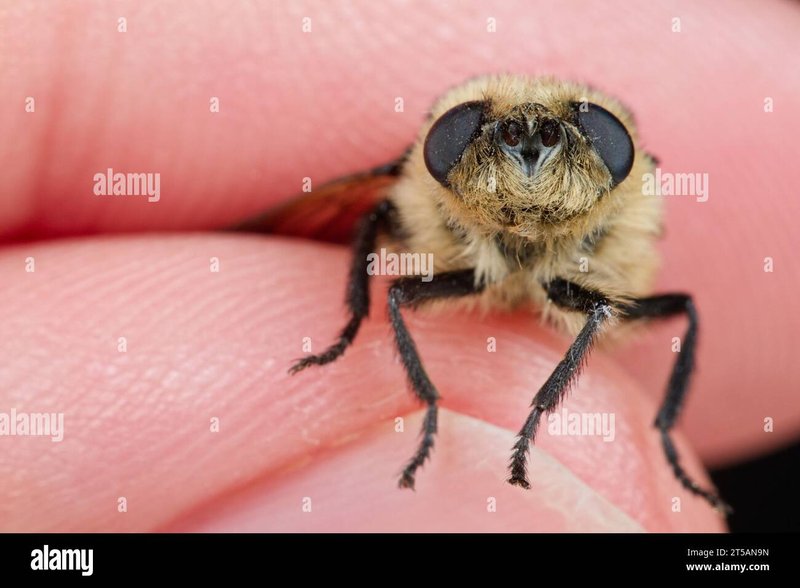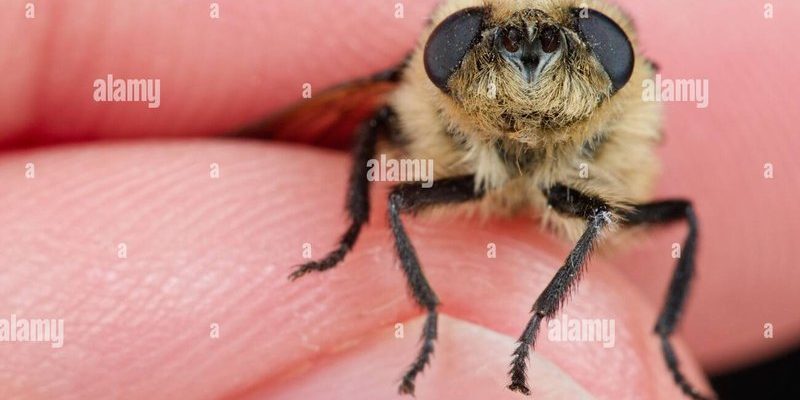
Botflies are known for their unique lifecycle, with larvae that burrow under the skin of mammals, including humans. If you’re out in the woods and concerned about these little invaders, understanding their host detection strategies can help you stay safe and informed. So, pull up a chair, and let’s get into the fascinating world of botflies and how they operate in forest habitats.
Understanding Botflies and Their Lifecycle
Before we get into detection strategies, it helps to know a bit about botflies. These insects belong to the family *Oestridae* and are best known for their unusual reproductive habits. After mating, a female botfly lays her eggs on or near a host, usually a mammal. Once the eggs hatch, the larvae burrow into the skin, creating a unique relationship that’s both alarming and necessary for their development.
In a forest setting, where mammals like deer, rodents, and even humans roam, botflies have plenty of candidates for their larval life stage. Their lifecycle typically involves several stages, including egg, larva, and adult, each with specific needs and behaviors. By understanding the lifecycle, we can better appreciate how they locate potential hosts.
Host Detection Techniques of Botflies
Botflies have developed clever strategies to detect their hosts. Understanding these can help us be more aware when we’re in forested areas. Here are some common techniques they use:
- Olfactory Cues: Botflies are incredibly sensitive to smells. They can detect specific scents that indicate a potential host’s presence. These scents may come from sweat or even the natural odors emitted by mammals. Staying clean and avoiding strong scents can help minimize the risk of attracting botflies.
- Visual Cues: The adult botfly has excellent vision. They are attracted to moving targets—like a deer or human walking through the forest. Wearing muted colors and avoiding sudden movements can make you less noticeable.
- Thermal Detection: Botflies can sense heat, which helps them locate warm-bodied hosts. Covering up in cooler fabrics may help deter them, especially in hot weather.
Each of these strategies shows just how attuned botflies are to their environments. By employing a mix of these techniques, they can effectively find hosts to continue their lifecycle.
The Role of Environmental Factors
Botflies also rely on their forest environment for detecting hosts. The structure of the forest—its density, humidity, and the availability of mammal populations—can affect their activities. For example:
- Humidity: Forests tend to be humid, which is favorable for botfly eggs and larvae. The moist environment helps sustain their lifecycle, making these areas prime locations for host detection.
- Animal Behavior: The presence of certain animal species can signal a healthy ecosystem. Botflies may focus on areas where their preferred hosts are more abundant, like regions where deer congregate.
- Floral and Vegetal Indicators: Certain plants and flowers can attract mammal hosts, providing additional cues for botflies. Dense shrubbery can also offer protection for botflies as they search for hosts.
Understanding these environmental factors helps paint a fuller picture of where botflies thrive and how they adapt to their surroundings.
Precautionary Measures for Forest Dwellers
If you spend time in forested areas, it pays to be aware of the measures you can take to avoid unwanted interactions with botflies. Here are some tips to protect yourself and reduce your risk:
- Wear Insect Repellent: Use repellents that contain DEET or picaridin on your skin. A good repellent can create a barrier, keeping these pests at bay.
- Dress Appropriately: Long sleeves and pants can help protect your skin. Choose clothing that fits snugly around the ankles and wrists to prevent botflies from getting through.
- Avoid Areas with High Wildlife Activity: If you notice a lot of animal traffic, consider changing your route. This not only helps avoid botflies but also keeps you safe from other wildlife encounters.
Staying aware of these precautions can significantly reduce your chances of becoming a host for these pesky pests.
Monitoring and Research Efforts
Researchers are continually looking for new ways to monitor botfly populations and their host detection strategies. By understanding their behavior and biology, scientists can develop better methods for managing and controlling these insects. Some exciting approaches include:
- Field Studies: Scientists spend time in forests observing botfly behavior. By tracking their movements and interactions with potential hosts, they gather important data on their habits.
- Environmental Sampling: Collecting samples from various forested regions helps identify where botflies are most prevalent. This information aids in predicting outbreaks and informing the public.
- Use of Technology: New tech, like drones, can assist in monitoring wildlife and botfly populations, providing a broader view of ecosystems and improving research accuracy.
Ongoing research efforts are crucial for better understanding botflies and protecting both wildlife and humans from potential infestations.
Botflies are unique and clever creatures that have mastered the art of host detection in forest environments. By developing various strategies—like using olfactory signals, visual cues, and environmental factors—they can effectively find their hosts. For anyone spending time in these beautiful woods, understanding these insects and taking precautions can make a big difference.
Staying informed about botflies not only helps protect yourself but also deepens your appreciation for the complex interactions in forest ecosystems. So the next time you’re out enjoying nature, remember to be observant and prepared. After all, knowledge is your best defense against these curious little critters!

